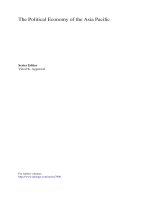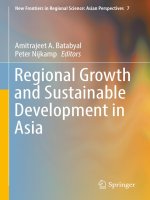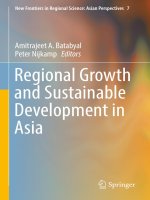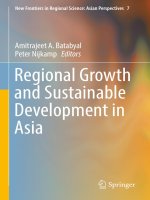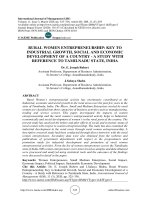Economic growth and economic development 163
Bạn đang xem bản rút gọn của tài liệu. Xem và tải ngay bản đầy đủ của tài liệu tại đây (44.63 KB, 1 trang )
Introduction to Modern Economic Growth
differences, others show that, with reasonable models, most of the cross-country
differences are due to technology.
While complete agreement is not possible, it is safe to say that the consensus
in the literature today favors the interpretation that cross-country differences in
income per capita cannot be understood solely on the basis of differences in physical
and human capital; in other words there are technology differences across countries
and these technology differences need to be understood.
Hence one important potential lesson from this data detour is that technological
progress is not only important in generating economic growth in the basic Solow
model, but also likely to be a major factor in cross-country differences in prosperity.
A detailed study of technological progress and technology adoption decisions of
households and firms is therefore necessary. This motivates the detailed analysis of
technological progress and technology adoption later in the book. It is also useful to
emphasize once again that differences in TFP are not necessarily due to technology
in the narrow sense. If two countries have access to the same technology but make
use of these techniques in different ways with different degrees of efficiency or if they
are subject to different degrees of market or organizational failures, these differences
will show up as TFP differences. Therefore, when we talk of technology differences
in the sense of this chapter, they should be construed rather broadly. By implication,
if we want to understand TFP differences across countries, we must study not only
differences in the techniques that they use but the way they organize markets and
firms and how to incentivize different agents in the economy. This again shapes
our agenda for the rest of the book, especially paving the way for our investigation
of endogenous technological change in Part 4 and of differences in technology and
productive efficiency across countries in Parts 6 and 7.
There is one more sense in which what we have learned in this chapter is limited.
What the Solow model makes us focus on, physical capital, human capital and
technology, are proximate causes of economic growth in cross-country differences. It
is important to know which of these proximate causes are important and how they
affect economic performance both to have a better understanding of the mechanics of
economic growth and also to know which class of models to focus on. But at some
level (and exaggerating somewhat) to say that a country is poor because it has
149



